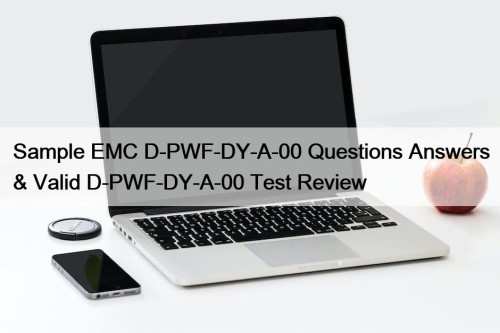Most Popular
 Latest HPE6-A78 Guide Files | HPE6-A78 Exam Sims
Latest HPE6-A78 Guide Files | HPE6-A78 Exam Sims
The TestsDumps HPE6-A78 exam questions are checked and verified by ...
 Latest DP-203 Exam Experience, Free DP-203 Exam Dumps
Latest DP-203 Exam Experience, Free DP-203 Exam Dumps
2025 Latest RealValidExam DP-203 PDF Dumps and DP-203 Exam Engine ...
 Sample EMC D-PWF-DY-A-00 Questions Answers & Valid D-PWF-DY-A-00 Test Review
Sample EMC D-PWF-DY-A-00 Questions Answers & Valid D-PWF-DY-A-00 Test Review
It is human nature to pursue wealth and success. No ...



Latest updated Latest CS0-003 Exam Topics - How to Download for CS0-003 Valid Exam Pattern free

BONUS!!! Download part of TestPDF CS0-003 dumps for free: https://drive.google.com/open?id=1AAnrUO043ZvHqNH4x6Qn3nUTvPl3XNih
We have confidence and ability to make you get large returns but just need input small investment. our CS0-003 study materials provide a platform which help you gain knowledge in order to let you outstanding in the labor market and get satisfying job that you like. The content of our CS0-003 question torrent is easy to master and simplify the important information. It conveys more important information with less answers and questions, thus the learning is easy and efficient. We believe our latest CS0-003 exam torrent will be the best choice for you.
CompTIA CS0-003, also known as the CompTIA Cybersecurity Analyst (CySA+) Certification exam, is a globally recognized certification designed to validate the skills and knowledge required to perform intermediate-level cybersecurity analysis. CompTIA Cybersecurity Analyst (CySA+) Certification Exam certification helps IT professionals to advance their career in cybersecurity by demonstrating their expertise in identifying and addressing security threats and vulnerabilities.
>> Latest CS0-003 Exam Topics <<
CS0-003 Valid Exam Pattern & CS0-003 Guaranteed Passing
You many attend many certificate exams but you unfortunately always fail in or the certificates you get can’t play the rules you wants and help you a lot. So what certificate exam should you attend and what method should you use to let the certificate play its due rule? You should choose the test CompTIA certification and buys our CS0-003 learning file to solve the problem. Passing the test CS0-003 certification can help you increase your wage and be promoted easily and buying our CS0-003 prep guide dump can help you pass the test smoothly. Our CS0-003 Certification material is closely linked with the test and the popular trend among the industries and provides all the information about the test. The answers and questions seize the vital points and are verified by the industry experts. Diversified functions can help you get an all-around preparation for the test. Our online customer service replies the clients’ questions about our CS0-003 certification material at any time.
CompTIA Cybersecurity Analyst (CySA+) Certification Exam Sample Questions (Q51-Q56):
NEW QUESTION # 51
An organization has noticed large amounts of data are being sent out of its network. An analyst is identifying the cause of the data exfiltration.
INSTRUCTIONS
Select the command that generated the output in tabs 1 and 2.
Review the output text in all tabs and identify the file responsible for the malicious behavior.
If at any time you would like to bring back the initial state of the simulation, please click the Reset All button.






Answer:
Explanation:
Explanation:
Select the command that generated the output in tab 1:
* netstat -bo
Select the command that generated the output in tab 2:
* tasklist
Identify the file responsible for the malicious behavior:
* cmd.exe
Select the command that generated the output in tab 1: The output in tab 1 displays active network connections, which can be generated using the netstat command with options to display the owning process ID.
Select the command that generated the output in tab 1:
* netstat -bo
Select the command that generated the output in tab 2: The output in tab 2 lists the running processes with their PIDs and memory usage, which can be generated using the tasklist command.
Select the command that generated the output in tab 2:
* tasklist
Identify the file responsible for the malicious behavior: To identify the malicious file, we compare the hashes of the current files against the baseline hashes. From the provided data:
* The hash for cmd.exe in the current state (tab 3) is 372ab227fd5ea779c211a1451881d1e1.
* The baseline hash for cmd.exe (tab 4) is a2cdef1c445d3890cc3456789058cd21.
Since these hashes do not match, cmd.exe is the file responsible for the malicious behavior.
NEW QUESTION # 52
A security analyst would like to integrate two different SaaS-based security tools so that one tool can notify the other in the event a threat is detected. Which of the following should the analyst utilize to best accomplish this goal?
- A. SNMP trap
- B. SMTP notification
- C. SMB share
- D. API endpoint
Answer: D
Explanation:
An API endpoint is a point of entry for a communication between two different SaaS-based security tools. It allows one tool to send requests and receive responses from the other tool using a common interface. An API endpoint can be used to notify the other tool in the event a threat is detected and trigger an appropriate action. SMB share, SMTP notification, and SNMP trap are not suitable for SaaS integration security, as they are either network protocols or email services that do not provide a direct and secure communication between two different SaaS tools. Reference: Top 10 Best SaaS Security Tools - 2023, What is SaaS Security? A Guide to Everything SaaS Security, 6 Key Considerations for SaaS Integration Security | Prismatic, Introducing Security for Interconnected SaaS - Palo Alto Networks
NEW QUESTION # 53
A security analyst needs to prioritize vulnerabilities for patching. Given the following vulnerability and system information:
Which of the following systems should the analyst patch first?
- A. System 3
- B. System 2
- C. System 5
- D. System 4
- E. System 1
- F. System 6
Answer: D
Explanation:
When prioritizing vulnerabilities, analysts consider the CVSS score, whether the system is internet-facing, and if sensitive data is involved. The primary goal is to mitigate the most exploitable and impactful risks first.
Let's break down the key components:
* Attack Vector (AV): Whether the attack can be launched remotely (N = Network) or locally (L = Local).
* Attack Complexity (AC): The difficulty of executing the attack (L = Low, H = High).
* Privileges Required (PR): The level of access needed for exploitation (N = None, L = Low, H = High).
* User Interaction (UI): Whether user interaction is required for the attack (N = No, R = Required).
* Scope (S): Whether the attack affects other systems (C = Changed, U = Unchanged).
* Confidentiality (C), Integrity (I), Availability (A): The impact level (H = High, L = Low, N = None).
Evaluating Each System:
* System 1 (CVSS: AV:N/AC:L/PR:L/UI:N/S:U/C:H/I:L/A:H)
* Internet-facing #
* No sensitive data #
* High confidentiality and availability impact #
* Moderate risk due to requiring low privileges
* System 2 (CVSS: AV:L/AC:L/PR:L/UI:N/S:U/C:H/I:L/A:H)
* Not internet-facing #
* No sensitive data #
* Lower priority since it's local-only
* System 3 (CVSS: AV:P/AC:H/PR:H/UI:R/S:U/C:N/I:N/A:L)
* Internet-facing #
* Contains sensitive data #
* But very low likelihood of exploit (requires physical access, high privileges, user interaction)
* Lower priority due to high attack complexity
* System 4 (CVSS: AV:N/AC:L/PR:N/UI:N/S:C/C:H/I:L/A:H)
* Internet-facing #
* No sensitive data #
* No privileges required for exploitation #
* High impact on confidentiality and availability #
* Most critical due to remote exploitability and system-wide scope
* System 5 (CVSS: AV:L/AC:H/PR:H/UI:R/S:U/C:L/I:N/A:N)
* Internet-facing #
* Contains sensitive data #
* But requires high privileges, high attack complexity, and user interaction
* Lower priority than System 4
* System 6 (CVSS: AV:L/AC:L/PR:L/UI:N/S:U/C:H/I:L/A:H)
* Not internet-facing #
* No sensitive data #
* Same as System 2 (low priority due to being local-only)
Final Decision: Patch System 4 First
System 4 is the most critical because:
* It is internet-facing (higher exposure).
* It has a high CVSS score.
* It requires no privileges (easy to exploit).
* It has system-wide scope impact (can affect other systems).
Thus, it should be patched first to minimize security risks.
NEW QUESTION # 54
An organization's website was maliciously altered.
INSTRUCTIONS
Review information in each tab to select the source IP the analyst should be concerned about, the indicator of compromise, and the two appropriate corrective actions.



Answer:
Explanation:
see the explanation for step by step solution.
Explanation:
Step 1: Analyzing the SFTP Log
The SFTP log provides a record of file transfer and login activities:
* User "sjames" logged in from several IP addresses:
* 192.168.10.32 and 192.168.10.37 (internal network IPs)
* 32.111.16.37 and 41.21.18.102 (external IPs)
* We see file alterations in the /var/www directory, which is commonly the web directory.
* Modified files: about_us.html, index.html
* Suspicious activity:
* 192.168.11.102 and 41.21.18.102 modified the files.
* 32.111.16.37 had failed login attempts, indicating possible unauthorized access attempts.
The most suspicious IP here is 41.21.18.102, as it's associated with direct file modifications, possibly indicating unauthorized access.
Step 2: Reviewing Netstat
The netstat output shows active connections and their states:
* IP 41.21.18.102 has an ESTABLISHED connection with port 22, commonly used for SFTP.
* IP 32.111.16.37 is also attempting connections, and 32.111.16.37 connections are in a TIME_WAIT state, showing prior connections were recently closed.
The netstat output reaffirms 41.21.18.102 is actively connected and potentially involved in malicious activities.
Step 3: Checking the HTTP Access Log
The HTTP Access log shows access to about_us.html:
* 32.111.16.37 repeatedly accessed /about_us.html with 404 errors, indicating attempts to reach non- existing pages.
* 41.21.18.102 accessed the 200 status code, showing successful page requests, but since this IP was modifying files directly on the server, it might be testing or verifying changes.
Again, 41.21.18.102 stands out as it matches both successful file modification and page request patterns, while 32.111.16.37 shows unsuccessful attempts.
Step 4: Selecting the IP of Concern
Based on the above analysis:
* answer: 41.21.18.102 should be the IP of concern due to its direct file modifications on critical web files (about_us.html, index.html).
Step 5: Identifying the Indicator of Compromise
Potential indicators include unauthorized file modifications:
* Modified index.html file is the correct answer, as it indicates direct changes to website content and is often a clear sign of compromise.
Step 6: Selecting Corrective Actions
To mitigate and prevent further compromise:
* Change the password on the "sjames" account: The account was used across various IPs, indicating potential account compromise.
* Block external SFTP access: Restricting SFTP to internal IPs only would prevent unauthorized external modifications. Since 41.21.18.102 was external, this would stop similar threats.
Summary
* IP of Concern: 41.21.18.102
* Indicator of Compromise: Modified index.html file
* Corrective Actions:
* Change the password on the sjames account
* Block external SFTP access
These selections address both the immediate security breach and implement a preventative measure against future unauthorized access.
NEW QUESTION # 55
An analyst receives threat intelligence regarding potential attacks from an actor with seemingly unlimited time and resources. Which of the following best describes the threat actor attributed to the malicious activity?
- A. Ransomware group
- B. Insider threat
- C. Organized crime
- D. Nation-state
Answer: D
NEW QUESTION # 56
......
The CS0-003 exam question offer a variety of learning modes for users to choose from, which can be used for multiple clients of computers and mobile phones to study online, as well as to print and print data for offline consolidation. For any candidate, choosing the CS0-003 question torrent material is the key to passing the exam. Our study materials can fully meet all your needs: Avoid wasting your time and improve your learning efficiency. Spending little hours per day within one week, you can pass the exam easily. You will don't take any risks and losses if you purchase and learn our CS0-003 Latest Exam Dumps, do you?
CS0-003 Valid Exam Pattern: https://www.testpdf.com/CS0-003-exam-braindumps.html
- Pass Guaranteed CS0-003 - CompTIA Cybersecurity Analyst (CySA+) Certification Exam Newest Latest Exam Topics 💰 Immediately open 《 www.testkingpdf.com 》 and search for ⮆ CS0-003 ⮄ to obtain a free download 🛣Certification CS0-003 Questions
- Test CS0-003 Questions Pdf 🚌 CS0-003 Reliable Test Voucher 😾 CS0-003 Latest Test Guide 🐠 Download ➥ CS0-003 🡄 for free by simply entering 【 www.pdfvce.com 】 website 🔥CS0-003 Reliable Test Forum
- Trustworthy CS0-003 Pdf ⤴ CS0-003 Latest Test Guide ⛵ CS0-003 Reliable Test Voucher 👄 Search for ➥ CS0-003 🡄 and obtain a free download on ✔ www.exams4collection.com ️✔️ 🌷Test CS0-003 Questions Pdf
- Free PDF Quiz 2025 Trustable CS0-003: Latest CompTIA Cybersecurity Analyst (CySA+) Certification Exam Exam Topics 🙁 Go to website ✔ www.pdfvce.com ️✔️ open and search for 【 CS0-003 】 to download for free 🎅Reliable CS0-003 Braindumps
- Amazing CS0-003 Exam Simulation: CompTIA Cybersecurity Analyst (CySA+) Certification Exam give you the latest Practice Dumps - www.itcerttest.com 🌜 Easily obtain free download of ⮆ CS0-003 ⮄ by searching on 「 www.itcerttest.com 」 👍Reliable CS0-003 Test Voucher
- CS0-003 Latest Test Guide 🛌 Reliable CS0-003 Test Voucher 🍆 CS0-003 Exam 🎈 Search for ⇛ CS0-003 ⇚ and download exam materials for free through { www.pdfvce.com } 📒CS0-003 Exam
- Free PDF Quiz CompTIA - CS0-003 Useful Latest Exam Topics 🕰 Simply search for [ CS0-003 ] for free download on ⏩ www.itcerttest.com ⏪ 🍺Training CS0-003 Tools
- Trustworthy CS0-003 Pdf 🛂 CS0-003 Interactive Course ✈ Test CS0-003 Questions Pdf 🏴 Download ➠ CS0-003 🠰 for free by simply entering ➡ www.pdfvce.com ️⬅️ website 🦍CS0-003 New Test Bootcamp
- Certification CS0-003 Questions 🙎 CS0-003 Test Pdf 🏳 Valid CS0-003 Test Practice 🛄 【 www.dumpsquestion.com 】 is best website to obtain 【 CS0-003 】 for free download 🌺Training CS0-003 Tools
- Free PDF Quiz 2025 Trustable CS0-003: Latest CompTIA Cybersecurity Analyst (CySA+) Certification Exam Exam Topics 🚜 Download { CS0-003 } for free by simply entering ( www.pdfvce.com ) website ✅Training CS0-003 Tools
- CS0-003 Valid Braindumps Files 🌞 CS0-003 New Test Bootcamp 🦕 CS0-003 Trusted Exam Resource 🐄 Search for ⏩ CS0-003 ⏪ and download it for free immediately on ➡ www.examsreviews.com ️⬅️ 📀Training CS0-003 Tools
- CS0-003 Exam Questions
- academy.gti.com.ng skillhive.org academy.hbaservices.com amiktomakakamajene.ac.id learn.designoriel.com digirizskill.online skillfinity.online panoramicphotoarts.com learning.d6driveresponsibly.it testacademia.com
BONUS!!! Download part of TestPDF CS0-003 dumps for free: https://drive.google.com/open?id=1AAnrUO043ZvHqNH4x6Qn3nUTvPl3XNih
Tags: Latest CS0-003 Exam Topics, CS0-003 Valid Exam Pattern, CS0-003 Guaranteed Passing, CS0-003 Official Cert Guide, CS0-003 Study Demo